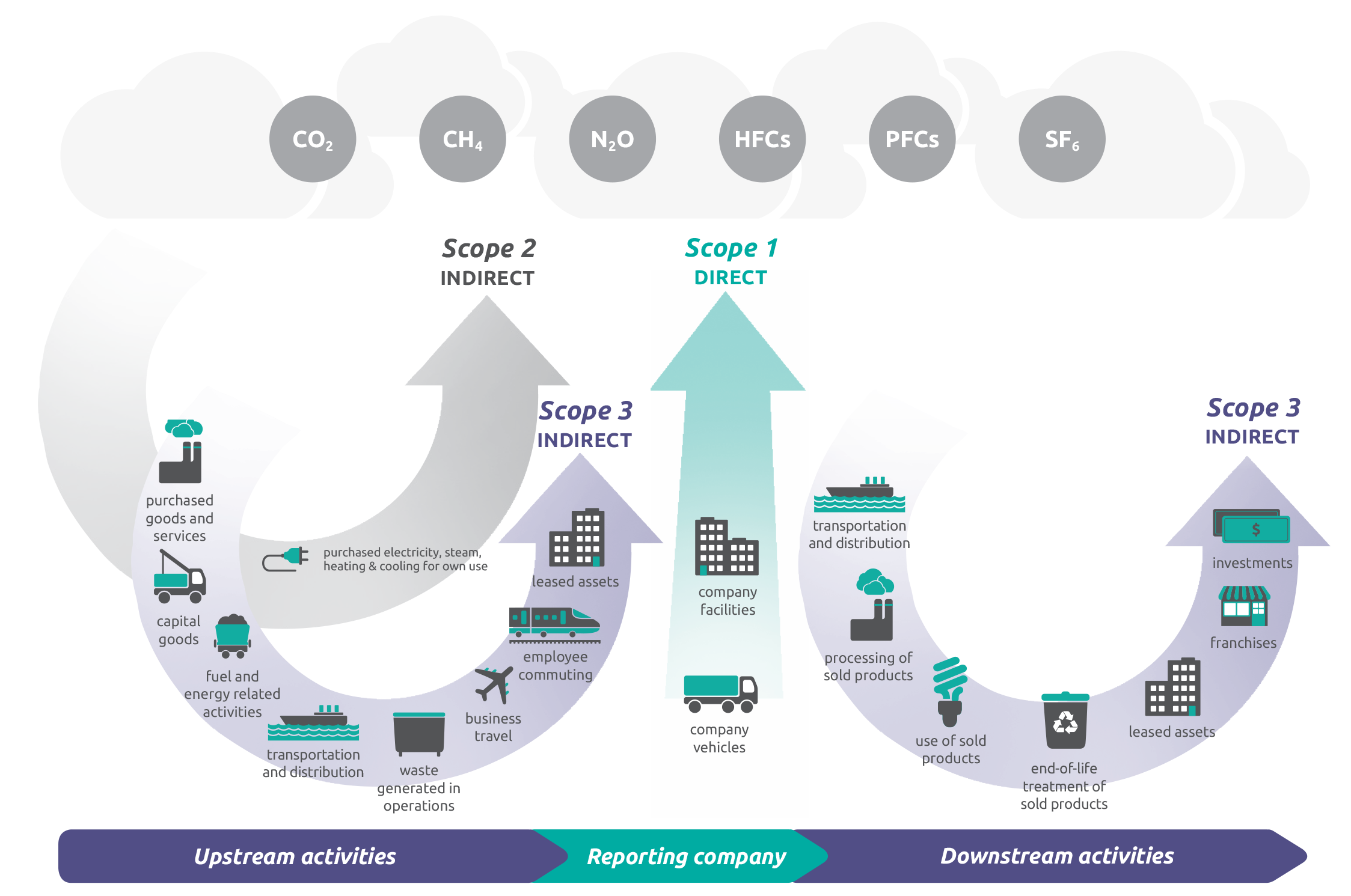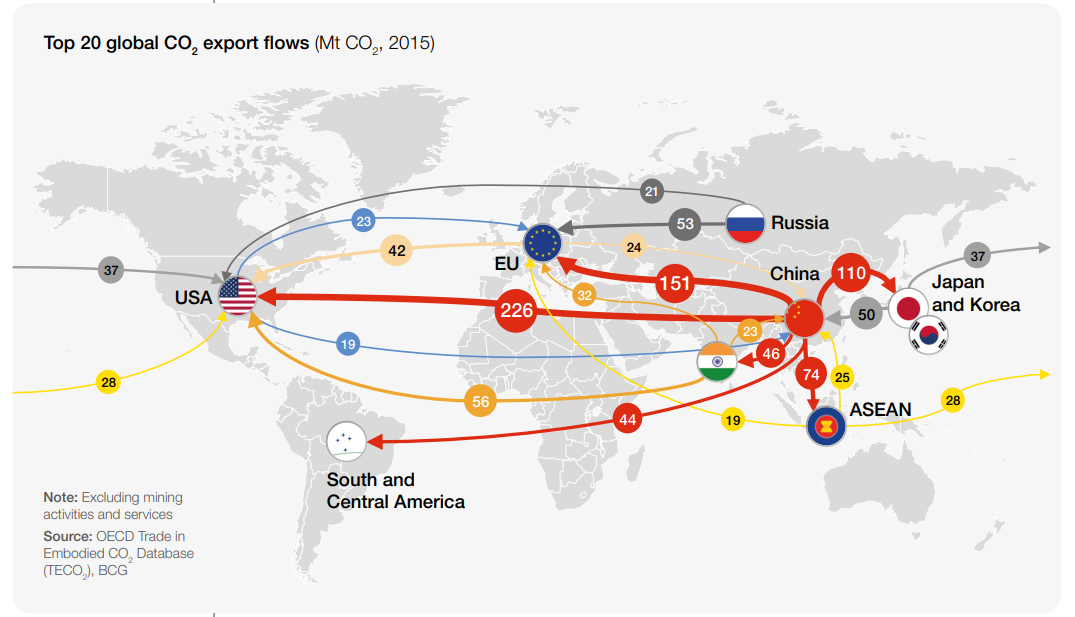At each stage of the life cycle of specific products, there are social and environmental aspects that impact people and the environment. Corporate governance and accountability are critical for each stage of the supply chain.
As a starting point, we measured our emissions and determined their impact on the climate. In fact, even SMEs can act in line with existing standards and good practices such as the GHG Protocol.
What is the GHG Protocol?
The GHG Protocol establishes comprehensive global standardized frameworks for measuring and managing greenhouse gas (GHG) emissions from public and private sector operations, value chains, and mitigation actions. It stems from a 20-year association between the World Resources Institute (WRI) and the World Business Council for Sustainable Development (WBCSD), and also works with governments, industry associations, NGOs, businesses and other organizations [1]
The Corporate Standard classifies the company's direct and indirect emissions into three scopes or areas (Figure 1):
- Scope 1 - direct emissions generated by the company, the source of which is owned or controlled by the company,
- Scope 2 - indirect emissions generated by energy purchased and consumed by the company
- Scope 3 - includes all other indirect emissions that are generated by the company's value chain.

Figure 1 - Overview of the purposes of the GHG protocol and emissions through the value chain.
It can be deduced, then, that Scope 3 is where most of a company's emissions reside.
The value chain refers to the entire life cycle of a product or process, including material, production, consumption, and disposal/recycling processes, as defined in a WBCSD report [2].
In general, an analysis of major global trade flows shows that Western economies import significant volumes of emissions, especially from Asia (see Figure 2).
This means that supply-chain measures put in place by relatively few end-consumer firms in Europe and the United States can influence the emissions profile of growing Asian economies.
Figure 2: The top 20 global CO2 export streams.
Therefore, it is also important for us at Compass DHM projects , to go beyond our direct operations to measure and influence our emissions through the supply chain.
Since both the brands included in our catalog and our customers have a wide geographic dispersion, actions in Scope 3 can have an important climate impact [3].
Upstream, emissions related to the supply-chain must be considered:
- Purchased goods and services
- Capital goods
- Fuel and energy-related activities (not included in Scope 2 operational emissions)
- Upstream transportation and distribution
- Waste generated in the various operations
- Business travel
- Employee commuting
Downstream, on the other hand, customer-related emissions must be considered:
- Downstream transportation and distribution
- Eventual processing of products sold
- Use of products sold
- End-of-life treatment of products sold
- Investments
At Compass DHM projects various projects are under development: from product production and storage to their transportation in collaboration with companies that have an active policy of environmental sustainability.
Follow us to get a 360-degree view of all other aspects involved in our Race to Zero.
Sources:
Figure 1: Copyright © World Resources Institute and World Business Council for Sustainable Development, September 2011 - "Corporate Value Chain (Scope 3) Accounting and Reporting Standard"
Figure 2: © 2021 World Economic Forum - "Net-Zero Challenge: The supply chain opportunity."
[1] https://ghgprotocol.org/about-us
[2] WBCSD, 2011 - "Collaboration, innovation, transformation."
[3] World Resources Institute & World Business Council for Sustainable Development, 2013 - "Technical Guidance for Calculating Scope 3 Emissions."








